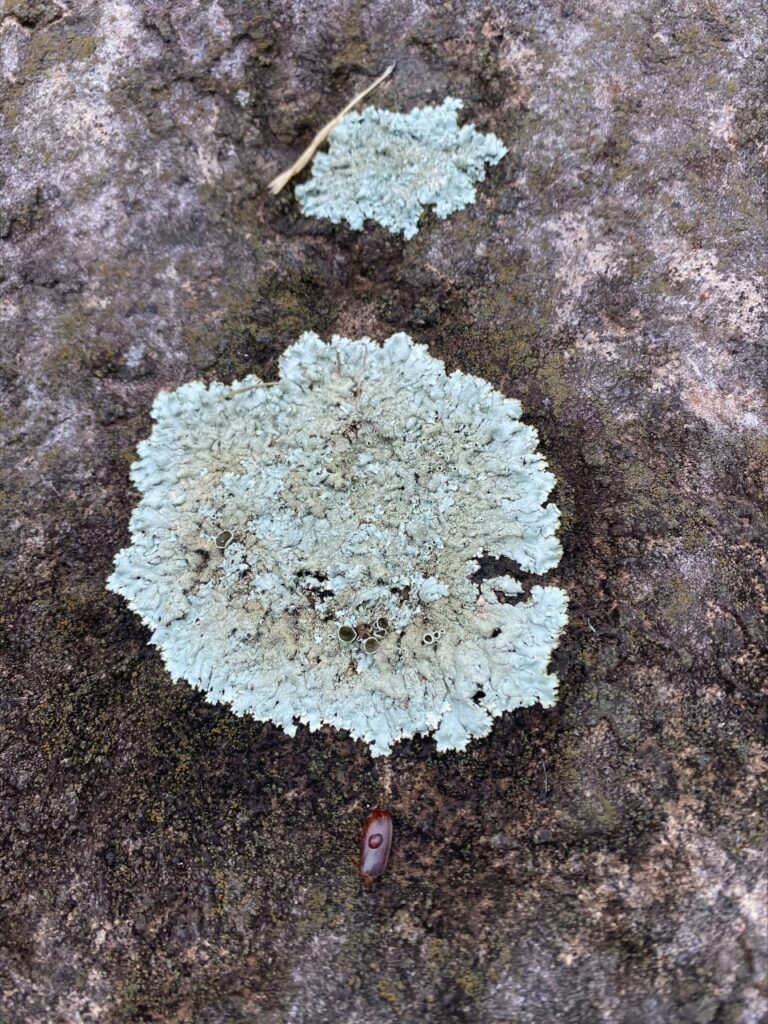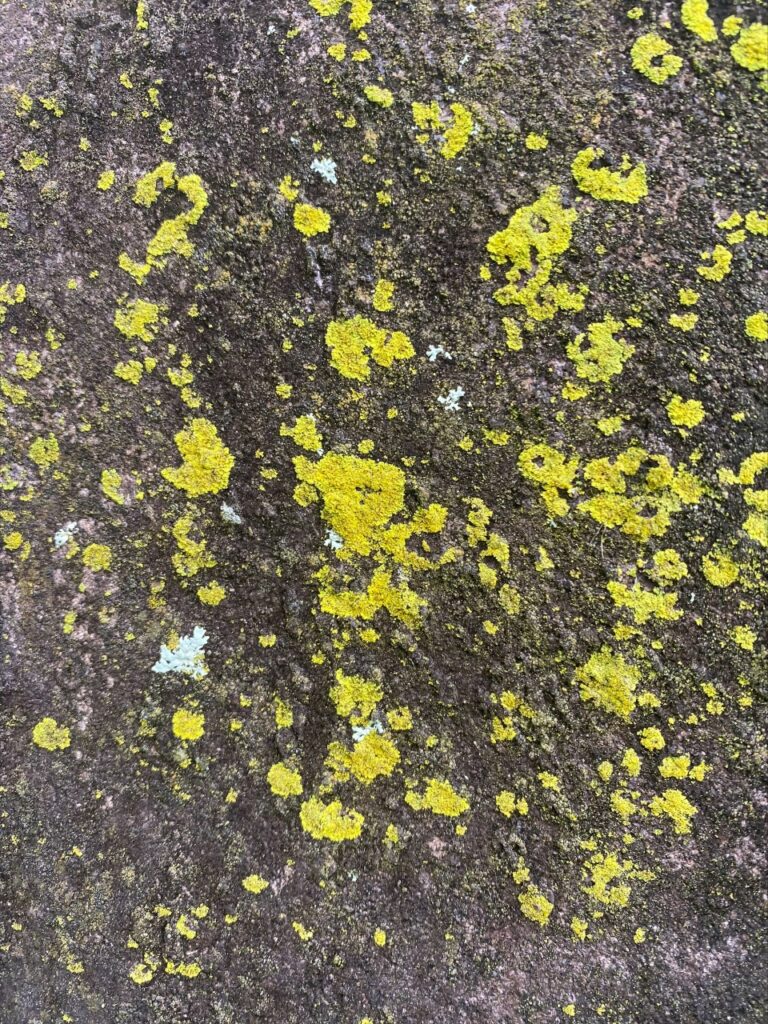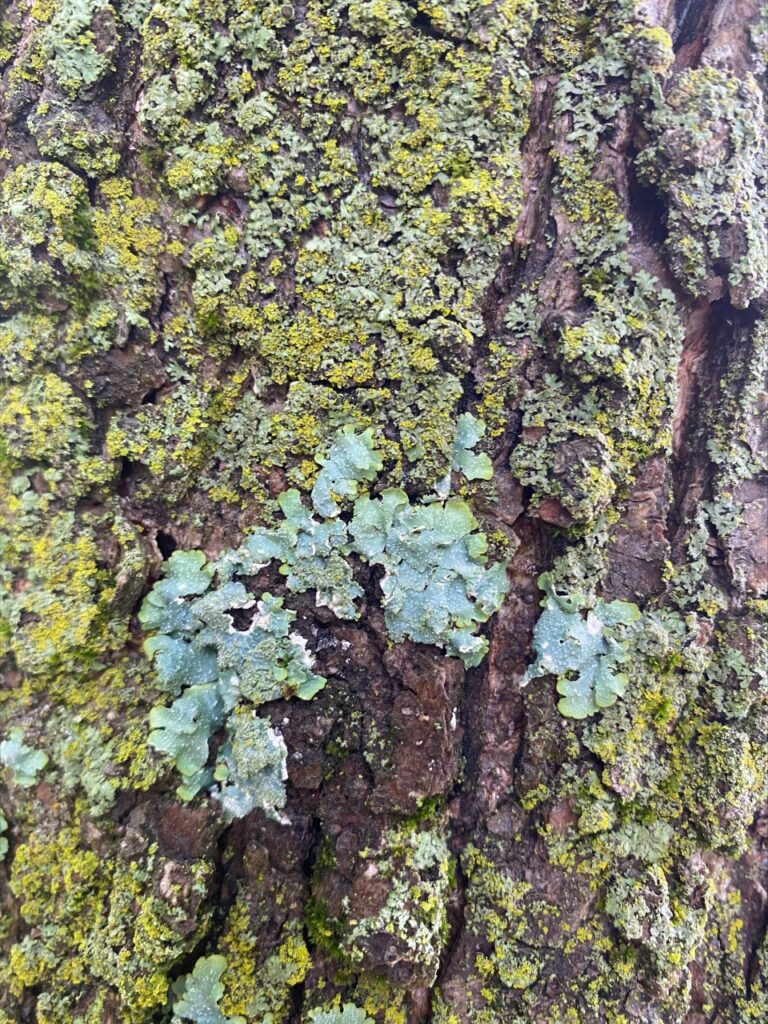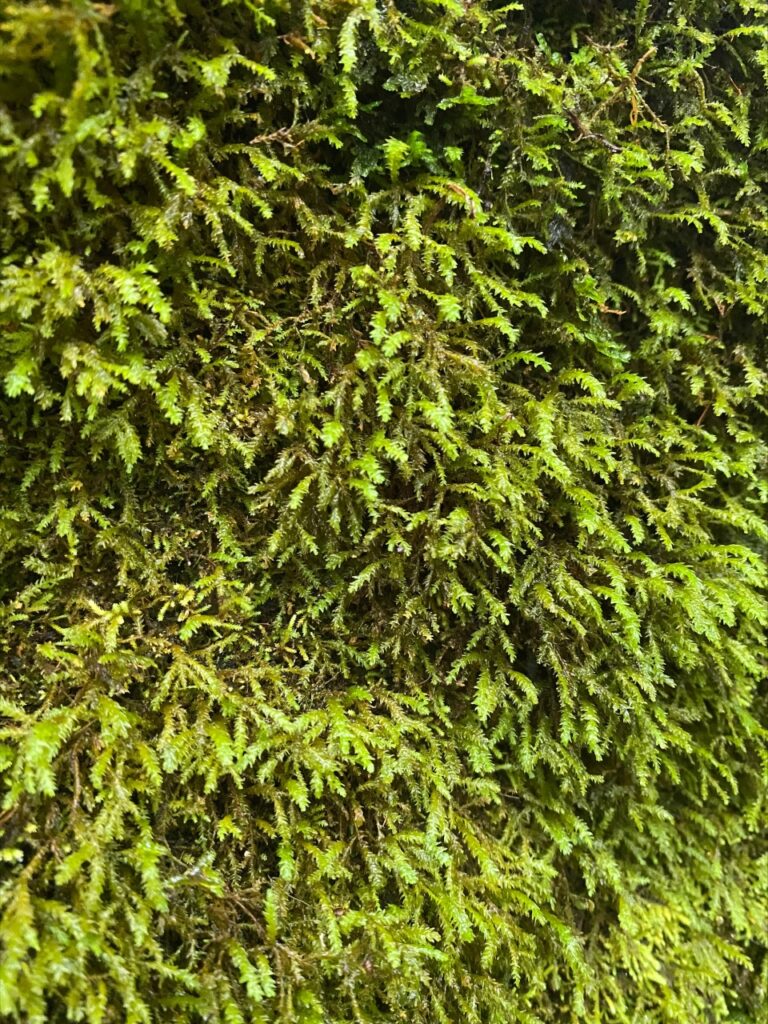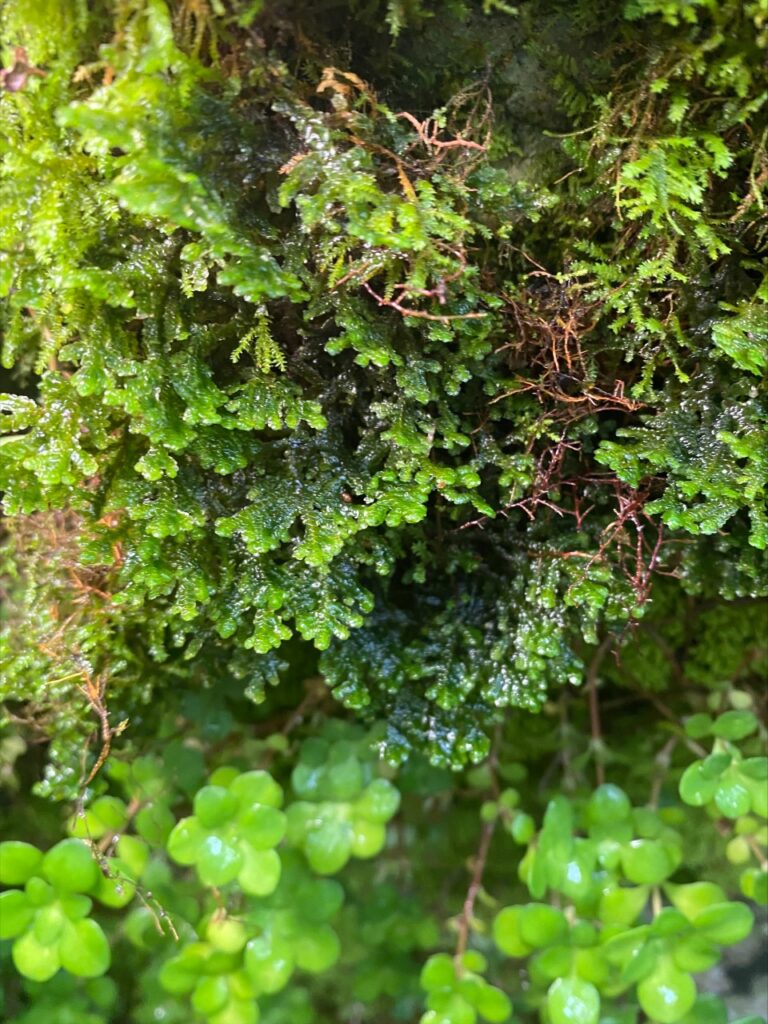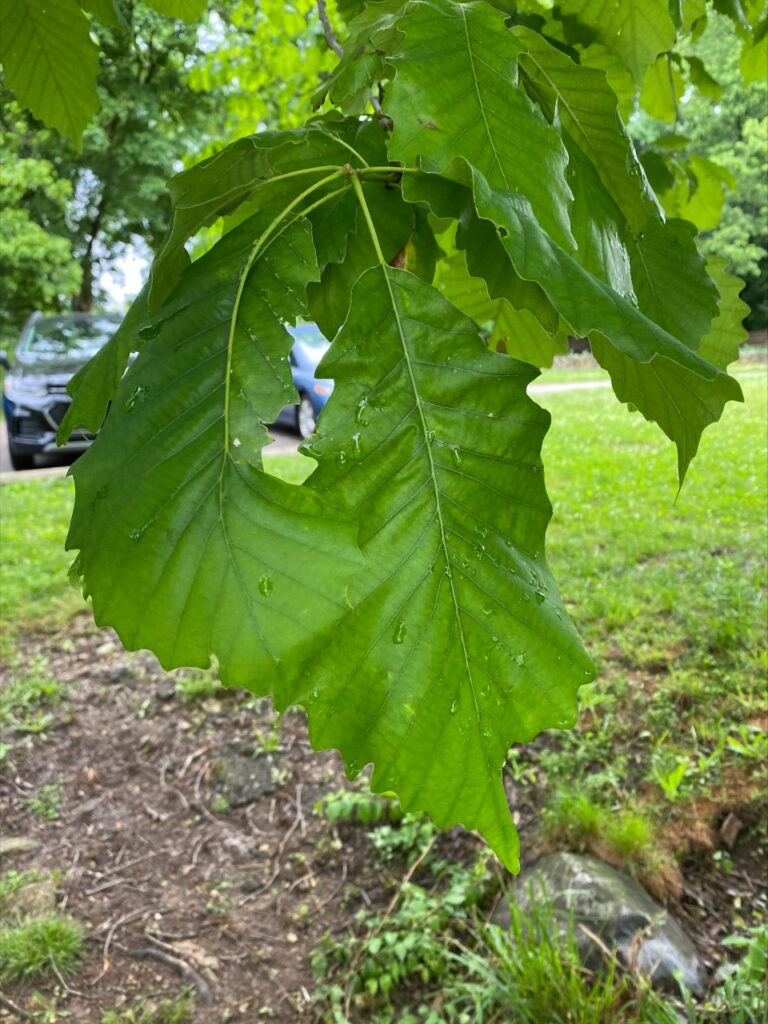Lichens and Bryophytes of Duranceau Park
Today we had a short, but sweet trip to Duranceau Park. We were here for roughly one and a half hours, but learned about a wide variety of lichens and bryophytes. We saw some unique plants that you will read about shortly. First, let’s learn a little bit about what exactly a lichen is.
Overview: You have probably seen a lichen before, they’re one of the most widely-distributed entities in nature. Lichens can come in a variety of colors that range from gray to brown to yellow-green, yellow and orange. Some do turn green when wet, but generally something green isn’t a lichen. Lichen like to live in close proximity to other organisms (symbiosis) and the two partners of lichen are fungus and algae, and occasionally cyanobacteria. Each lichen species has a different species of fungus, but the same species of algae could be present in scores of different lichens. Therefore fungus are the more dominant partner. The fungus group to which the great majority of lichens belong is the class Ascomycetes.
Anatomy: 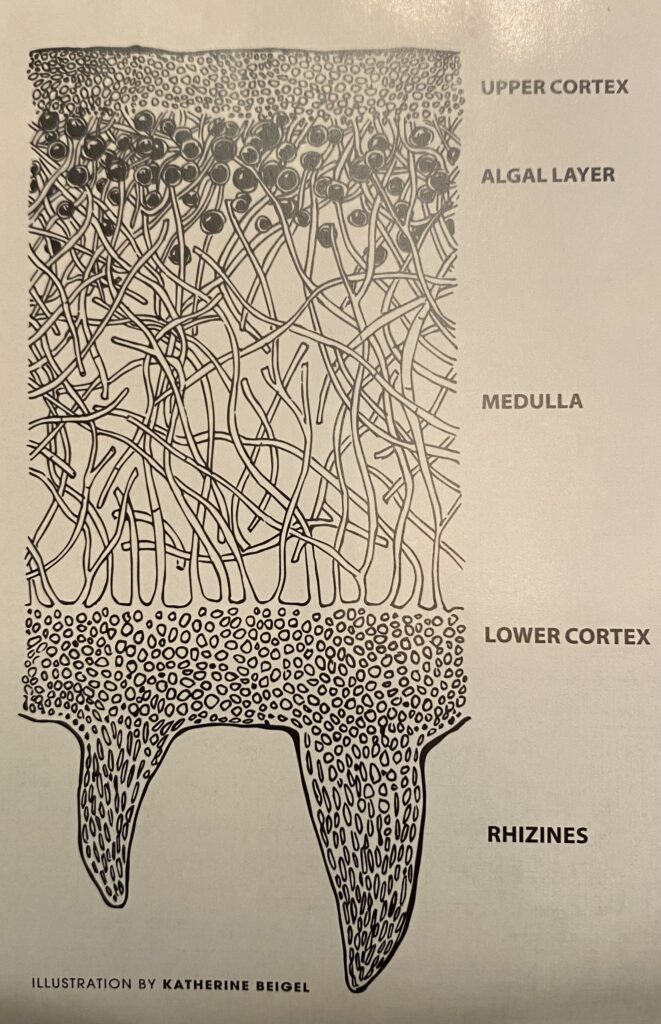 Morphology: The three most common growth forms of lichen are known as crustose, foliose, and fruticose.
Morphology: The three most common growth forms of lichen are known as crustose, foliose, and fruticose.
Crustose lichen are thin and very tightly attached on the substrate that they are growing on. They tend to grow in a circular pattern and are no thicker than a coat of paint. Crustose lichen are stratified. they have a hard upper cortex that consists of dense fungal cells or hyphae. then there is a thin algal layer where all the algae are located. This is then followed by the medulla a looser tissue of fungal cells. I think it is important to mention that one group of crustose lichens is not stratus fied and the fungal hyphae and algal cells are jumble together. This type of lichen does not have a large surface and it is very hard to separate from the substrate.
Foliose lichen are flat and leaf like. growth occurs at the outer margin usually as a circular pattern. Areas of faster growth produce loves which may be larger or smaller depending on species. Some species grow together and some library fly on the substrate while others may have edges that curl. Most foliose lichen are stratified into four layers. this includes the upper cortex, algal layer, medulla, and lower cortex. The lower cortex has a distinct bottom. Rhizines are found on the lower surface. They resemble roots and anchor the lichen to the substrate. They can be branched in several different ways.
Fruticose are lichens that are upright like tiny trees or bushes, or they can hang down like a miniature vine. This type of lichen is long and skinny with a round or flattened cross section. They have an outer cortex, algal layer and medulla, but do not have a definite top or bottom. The center is hollow organ have a denser strand. A family of fruticose named cladoniform consist of two parts, a primary fellas which is the first thing to grow. The second part is the upright Fruticose called a podetium. This is the most common type in Ohio.
Ecology: In some animal species the connection to lichen is essential. Some use lichen when convenient, but do not depend on them and even us humans use them! One lichen named Usnea are used for their antibiotic properties. Lichens are used in deodorant, toothpaste, salves, extracts, and perfumes. (https://www.fs.fed.us/wildflowers/beauty/lichens/didyouknow.shtml)
Some animals use lichen for the purpose of camouflage. These lichen can also provide shelter for numerous small animals such as barklice, springtails, and mites. Lichens can also be used for nesting material for birds that is if they can get the lichen off of the substrate.
Lichens: Let’s look at some pictures of some lichen and learn how to distinguish them. You can use these pictures and descriptions next time you’re out and about!
Plitt’s Rock Lichen
Plitz Rock shield is medium sized lichen it can grow to several inches, but frequently forms larger coalesced patches. in terms of the lows they are narrow, with a shiny, yellow Dash green upper surface and tan to light brown lower surface. Isidia are present on the upper service and apothecia are common. This lichen prefers sandstone and acidic rocks. It also likes horizontal or sloping surfaces in full sun, but not vertical rock faces. The Peppered Rock Shield Xanthoparmelia conspersa is similar, but had a black lower surface.
Lemon Lichen
When looking at lemon liking you will notice it is small, usually no larger than a fingernail. It has very small lobes. Thalli sometimes coalesce to form larger patches. Color of the upper surface is greenish yellow to you lemon yellow, with a whitish undersurface. This species grows on Park in full sun. It prefers ash walnut and maple bark. The sister species, Candelaria fibrosa does not have soredua and always has apothecia.
Bottlebrush Frost Lichen
(Physconia detersa)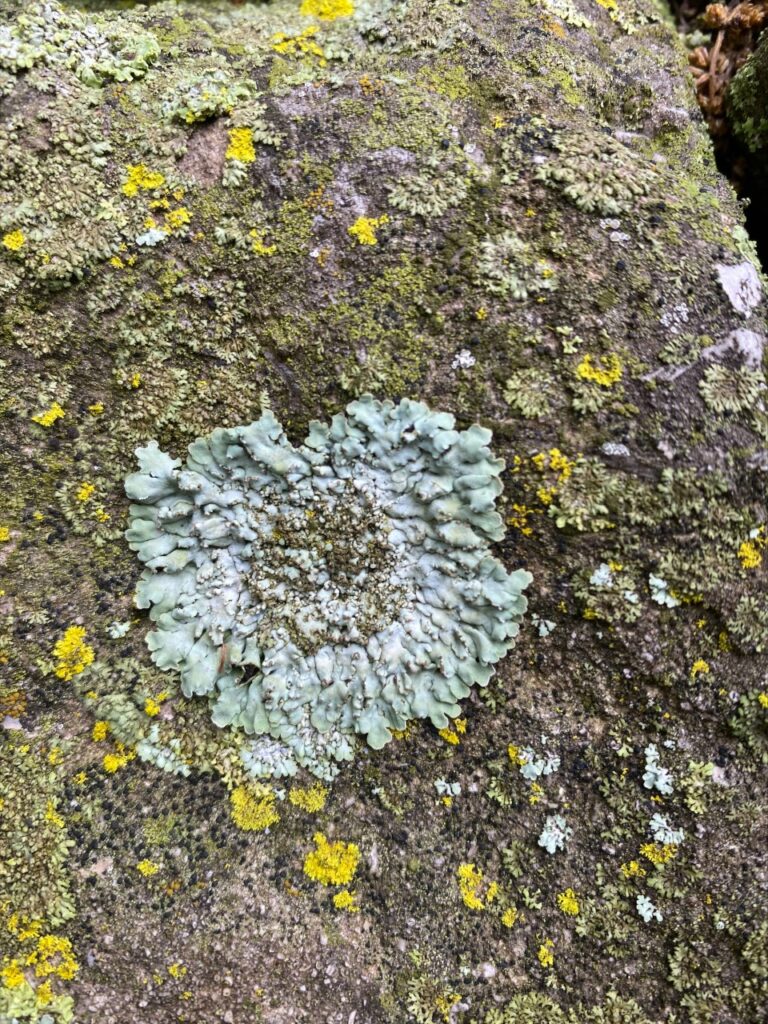 The bottlebrush frost lichen is medium sized. It is great – brown to brown with a brown to black under service. The lobes have marginal soredia with frosted tips. This species prefers to grow on bark in full sun with light shade. It is also found on cemetery headstones. This is the most common type of bottle frost lichen.
The bottlebrush frost lichen is medium sized. It is great – brown to brown with a brown to black under service. The lobes have marginal soredia with frosted tips. This species prefers to grow on bark in full sun with light shade. It is also found on cemetery headstones. This is the most common type of bottle frost lichen.
Rough Speckled Shield Lichen
Rough speckled shield lichen is a large foliose lichen with broad lobes. The color of the upper surface is gray with a pale brown under surface. The loaf tips have tiny white spots in the center of the Salas is densely isidiate. This lichen grows primarily on trees in full sun to light shade. Sometimes you can find it on rocks. The powdered speckles shield lichen, Punctelia caseana is similar but has soredia as opposed to isidia.
Bryophytes: Mosses and liverworts are a very special group of organisms. Both of these plants do not have vascular tissue. Let’s look at some examples.
Common Tree Skirt Moss
(Anomodon attenuatus)
The Tree Skirt Moss is a perennial evergreen that forms sprawling mats or low cushions up to one inch across. The stems are light green to light yellowish brown and abundantly branched. Overlapping leaves occur all around the stems and along the entire length. Individual leaves are 1-2 mm long, ovately shaped, toothless along their margins. The leaf tops are acute or narrowly rounded. This moss can be found in a variety of places including woodlands, sandstone bluff, rocky canyons, and around streams. (https://www.illinoiswildflowers.info/mosses/plants/cm_treeskirt.html)
Porella Liverwort
(Porella navicularis)
The powell’s liverwort is glossy, yellowish-green to brown that forms dense, coarse mats. It’s shoots are 1-2 times pinnate and up to 12 can long. The dorsal leaves are flexed downward, and have entire margins. Lobules are oval to ovate. The margins area entire and recurved. When the apex is dried it commonly recurves. The under leaves are oblong in shape and the apex is rounded. Trigones which are the triangular-shaped corner thickening’s are large and bulging. The bulge inwards on the cell. (https://www.centralcoastbiodiversity.org/tree-ruffle-liverwort-bull-porella-navicularis.html)
An Important Tree: I would be remiss if I didn’t include at least one tree. Here we will look at the Chinquapin oak!
Chinquapin oak
The Chinkapin oak is a medium-size tree whose leaves are 8–13 pairs of sharp teeth. The Twix bud and acorn cups resemble those of chestnut oak, but bark is light gray and often flaky, not rigid. The dwarf Oak also has sharp tooth leaves but the teeth are fewer and the leaves are smaller. The Chinquapin oak prefers well-drained upland soils derived from limestone or where limestone occurs.

